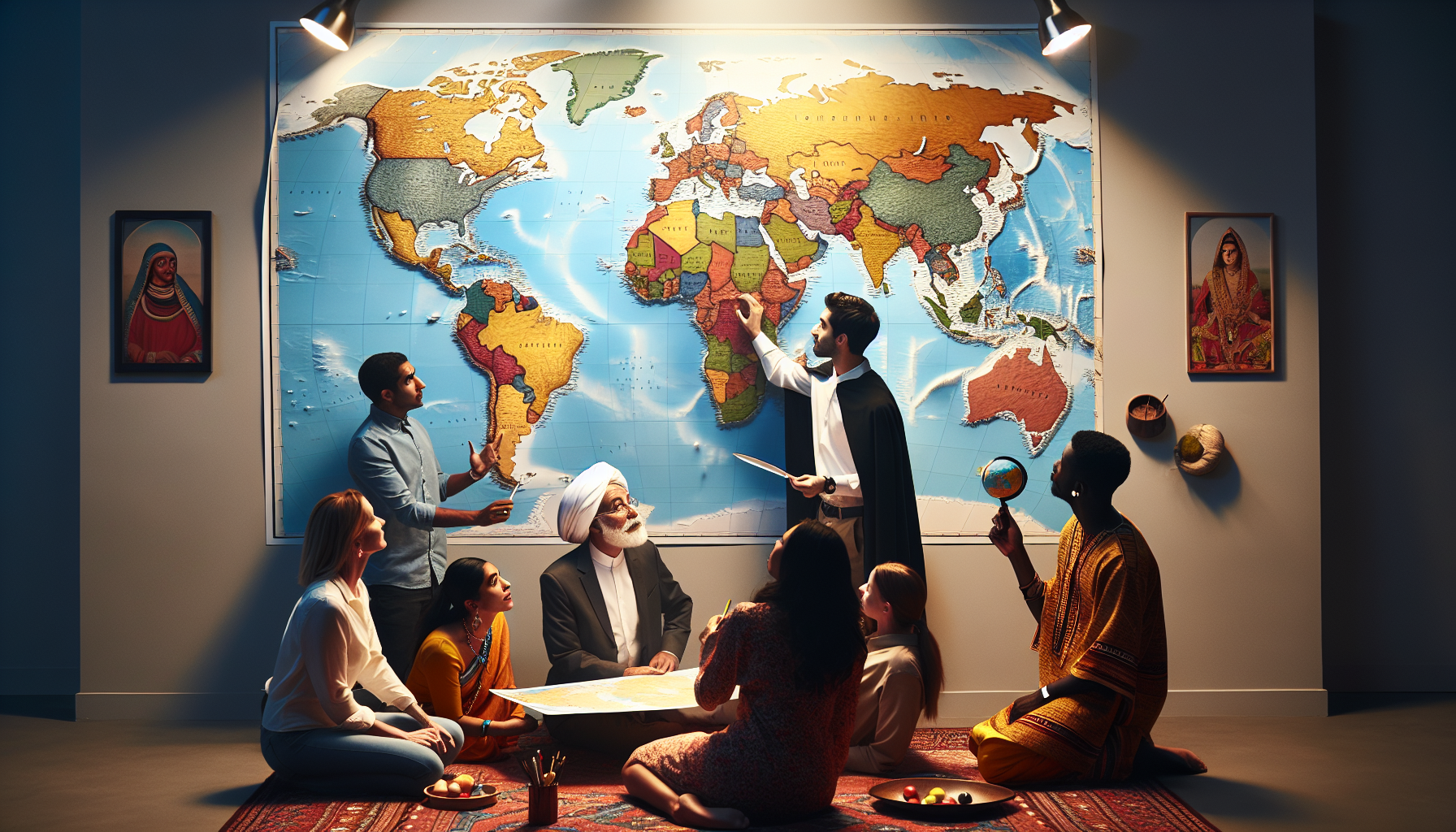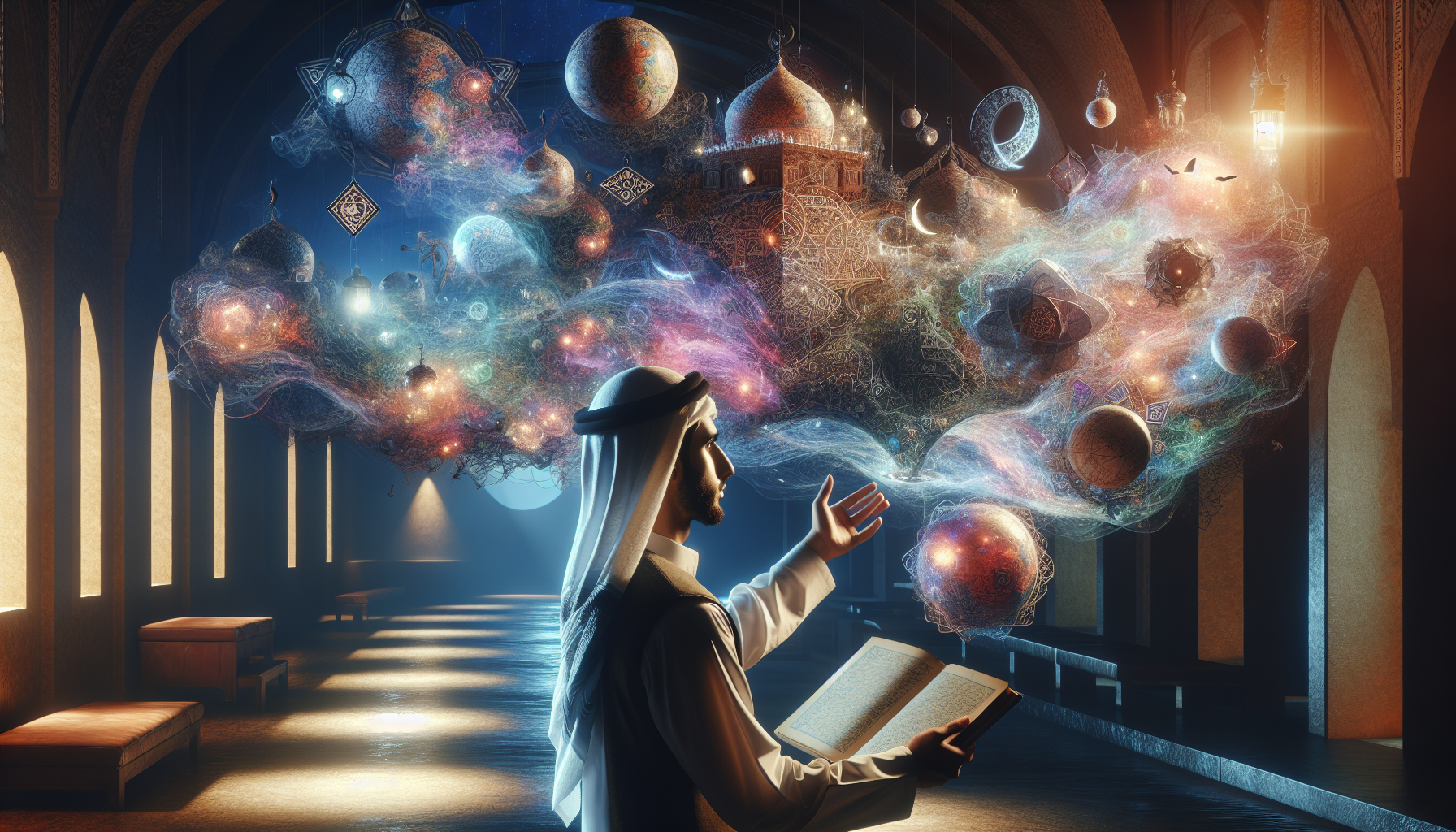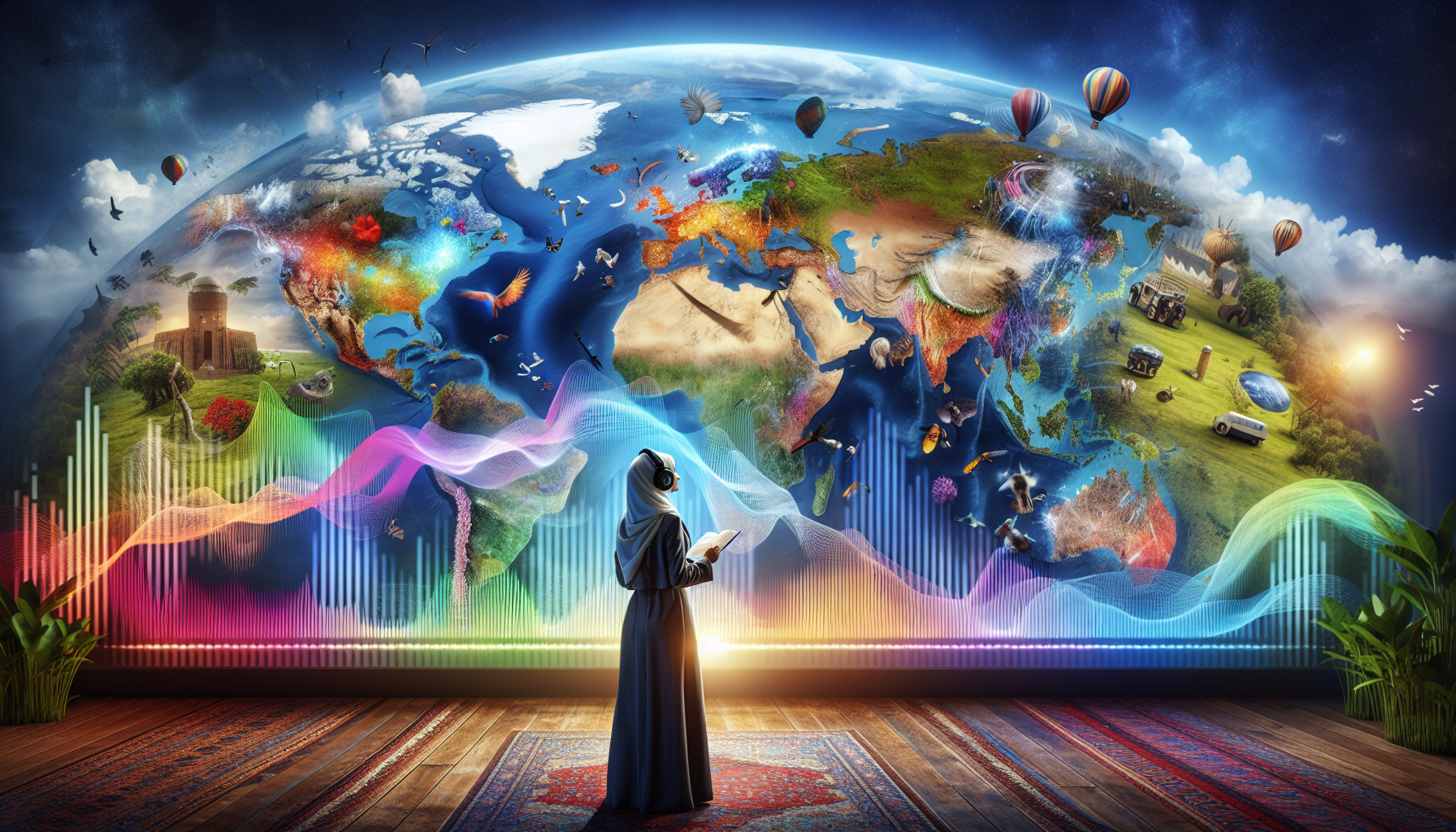広告
In a world where we often take maps for granted as simple tools for navigation, there lies a fascinating narrative about how these representations shape our understanding of the world and our place in it. The conventional map, as many of us know it, features the Northern Hemisphere at the top. But what if we turned that notion on its head—literally? Welcome to the intriguing concept of “The World Upside Down,” where the North-South orientation is flipped, challenging our perceptions and cultural biases. 🌍 This seemingly small change raises profound questions about power, dominance, and how historical narratives are constructed and perpetuated. It invites us to rethink not only geography but also our cultural compass, prompting a reassessment of how we view ourselves in relation to others.
広告
As we embark on this exploration of the cultural impact of reversing the traditional map orientation, we’ll delve into the historical roots of the North-South dominance and how it came to be accepted as the norm. Maps are more than just geographic tools; they are powerful symbols that reflect and influence our worldview. By examining the implications of a world turned upside down, we can uncover the hidden biases in our educational systems, media representations, and even in our subconscious. The psychological and sociological effects of map orientation are more significant than one might assume, influencing everything from national identity to international relations. By flipping the script, we challenge these long-standing conventions and open the door to a more equitable representation of the globe.
広告
In this article, we’ll explore key topics such as the historical evolution of map-making, the cultural symbolism embedded in cartographic choices, and the psychological impact of viewing the world from a different perspective. We’ll also discuss the potential benefits of adopting an upside-down map in education and global discourse, including fostering greater cultural empathy and breaking down stereotypes. 🌐 Our journey will take us through the stories of those who have dared to challenge the status quo, offering a fresh lens through which to view the world. By the end of this article, you’ll gain a deeper understanding of how something as simple as a map can have profound implications on our cultural and social frameworks. So, let’s turn our world on its head and see what revelations await!
The Historical Roots of the North-South Orientation
Throughout history, the North-South orientation has significantly shaped human perception, geographical understanding, and cultural development. This orientation wasn’t always the norm; in fact, many ancient maps were oriented with the East at the top. This perspective is visible in the word “orientation” itself, which originates from the Latin “oriens,” meaning East. In medieval times, maps known as “mappa mundi” often placed East at the top to symbolize religious views, particularly the idea of Paradise being in the East. However, as navigation and scientific exploration advanced, particularly during the Age of Discovery, the North became a prominent reference point. This shift was partly driven by the use of the magnetic compass, which naturally pointed towards the magnetic North, thereby gradually establishing the North-South orientation as a standard in cartography and navigation.
The North-South orientation has been more than a mere geographical reference; it has deeply influenced cultural narratives and societal hierarchies. For centuries, the North has been associated with development, progress, and power, primarily because of the industrial advancements and colonial exploits of European nations situated in the Northern Hemisphere. In contrast, the South, often depicted as the “Global South,” has been viewed as underdeveloped and struggling with poverty, a stereotype that oversimplifies and disregards the rich cultural histories and advancements of southern regions. This dichotomy between North and South is evident in the economic and political landscapes, where global power dynamics often favor Northern countries, leading to a skewed worldview that influences international relations and cultural perceptions.
Understanding this historical context is crucial for analyzing the cultural impact of the North-South orientation. It helps explain why many cultural narratives emphasize the superiority of the North while undermining the South. This perspective has also affected literature, art, and media, perpetuating stereotypes that continue to shape societal attitudes and policies. To gain a deeper insight into how these cultural constructs developed and their ongoing influence, it’s essential to delve into the historical evolution of mapmaking, navigation, and the socio-political forces that have contributed to this global orientation.
The Cultural Impact: Shaping Perceptions and Stereotypes
The cultural impact of the North-South orientation extends far beyond geographic references; it has significantly influenced perceptions, stereotypes, and social constructs. One of the most pronounced effects is the perception of the North as a region of prosperity and the South as a space of poverty and underdevelopment. This view is deeply embedded in literature, cinema, and media, where narratives often depict Northern countries as modern and progressive, while Southern countries are shown as exotic, chaotic, or impoverished. Such depictions contribute to reinforcing harmful stereotypes and overlook the diversity and richness of Southern cultures.
This cultural bias is not just limited to media representation; it also affects global politics and economics. The Global North often holds more power in international organizations, shaping policies that favor their interests, which can sometimes lead to the marginalization of Southern voices. Economic disparities are also evident, as many Northern countries have historically exploited Southern regions for resources and labor, leading to an imbalanced global economy. This dynamic has been critiqued in post-colonial studies, which emphasize the need to deconstruct these stereotypes and promote a more equitable view of global cultures.
Despite these challenges, there is a growing movement to “flip the script” and challenge these narratives. Scholars, activists, and artists from the Global South are increasingly reclaiming their narratives and highlighting the achievements, innovations, and resilience of their cultures. This shift is evident in various cultural productions that celebrate Southern heritage, challenge colonial legacies, and promote intercultural dialogue. By addressing these stereotypes and advocating for a more balanced representation, there is hope for a future where the North-South orientation is seen as a geographical term rather than a cultural hierarchy.
Reimagining the World: Innovative Approaches to the North-South Divide
In recent years, there has been a concerted effort to reimagine the North-South divide and explore innovative approaches to bridge cultural gaps. One such approach is through education, where curricula are being developed to include diverse perspectives, particularly from the Global South. This educational shift aims to provide students with a more comprehensive understanding of world cultures, histories, and contributions. By integrating Southern narratives into educational systems, there is potential to dismantle stereotypes and promote a more inclusive worldview.
Technology and social media have also played a crucial role in this reimagining process. With the rise of digital platforms, individuals from the Global South have greater access to share their stories and perspectives with a global audience. Social media campaigns, online forums, and digital art have become powerful tools for challenging traditional narratives and showcasing the vibrancy of Southern cultures. These platforms provide an opportunity for intercultural exchange, where people from different backgrounds can connect, learn, and collaborate.
Furthermore, there is a growing interest in fostering South-South cooperation, where countries in the Global South collaborate on initiatives, share resources, and exchange knowledge without relying on Northern intermediaries. This approach encourages self-reliance and empowerment, allowing Southern nations to define their paths of development and innovation. By focusing on collaboration and mutual support, there is potential to create a more equitable global landscape, where the North-South orientation is not a marker of division but an opportunity for unity and shared growth.
Video Recommendation
To delve deeper into this topic, watch this insightful video: “Rethinking the North-South Divide” – Channel: Global Perspectives 📺

結論
In conclusion, “Flip the Script: The Cultural Impact of North-South Orientation in The World Upside Down” provides a fascinating exploration of how our perception of the world can be fundamentally altered through a simple shift in orientation. Throughout this article, we have delved into various dimensions of this theme, discussing its historical roots, psychological implications, and cultural significance. By challenging the traditional north-up orientation of maps, we unlock a new perspective that invites us to reconsider the power dynamics and biases that have shaped our understanding of the world for centuries.
We began by examining the historical context of map-making and how the convention of placing the north at the top has been largely arbitrary, yet deeply influential. This orientation has perpetuated a Eurocentric view, prioritizing the Global North and subtly relegating the Global South to a secondary status. By flipping the map, we disrupt these long-standing conventions, encouraging a more egalitarian view of the world. This is not just a geographical shift but a cultural one, urging us to question other inherited biases and stereotypes.
Psychologically, this reorientation can be quite profound. It forces us to confront our ingrained perceptions and reconsider our place in the world. When the world is upside down, the familiar becomes unfamiliar, and we are challenged to see things from a different vantage point. This can lead to increased empathy and understanding, as we become more aware of the diverse perspectives that exist beyond our immediate view. It encourages open-mindedness and adaptability, traits that are increasingly valuable in our interconnected global society.
Culturally, the impact of this shift is significant. Art, literature, and media have long used the concept of “The World Upside Down” to challenge the status quo and provoke thought. By embracing this metaphor, we tap into a rich tradition of questioning authority and imagining alternative realities. It inspires creativity and innovation, encouraging us to break free from conventional thinking and explore new possibilities. This is particularly relevant in today’s rapidly changing world, where adaptability and innovation are key to addressing global challenges.
The importance of this theme extends beyond academic or intellectual interest. It has practical implications for how we engage with the world and each other. By flipping the script, we are reminded of the power of perspective and the importance of questioning our assumptions. It encourages us to be more inclusive in our thinking and more deliberate in our actions. In a world that is increasingly interconnected, understanding and appreciating diverse perspectives is crucial for fostering collaboration and driving positive change.
As we reflect on the cultural impact of reorienting our world, it is essential to continue the conversation. I encourage you, dear reader, to share your thoughts and insights on this topic. How does the concept of “The World Upside Down” resonate with you? Have you encountered similar shifts in perspective that have challenged your worldview? Engage with others by sharing this article, and let’s continue to explore the potential for transformation that lies in simply viewing the world from a different angle. 🌍
To delve deeper into this subject, consider exploring resources such as The Power of Maps by Denis Wood, which offers a critical examination of the role of maps in shaping our understanding of the world, and How to Lie with Maps by Mark Monmonier, which provides insights into the manipulation of cartographic representations.
In closing, the journey of flipping the script on our north-south orientation is not just about maps, but about embracing new perspectives and challenging the norms that shape our world. By doing so, we open the door to greater understanding and a more inclusive worldview. Let’s continue to question, learn, and grow together, making the world not just upside down, but right side up for everyone.
トニ・サントス デジタル地図製作者、ビジュアル思想家、そして素晴らしく奇妙なもののキュレーターです。で アイサップ彼は野生の世界に飛び込みます 奇妙な地図、想像上の地理、そして代替地図の現実私たちの周りの世界をどのように見て、どう感じているかについて、新たな視点を提供します。
彼の作品は、 地図は単なるナビゲーションツールではない。それらは、知覚、記憶、想像力、さらには神話への入り口なのです。歪んだ歴史地図からシュールな地形、陰謀地図帳、AI生成の世界構築まで、 トニは論理に挑戦し、好奇心を刺激する地図を作成し、収集しています.
ストーリーテリング、アート、象徴的な探求のバックグラウンドを持つトニは、Aysappをプラットフォームとして活用し、 忘れられた場所、目に見えない境界、そして再想像された現実。彼の作品は、「もし世界がひっくり返ったらどうなるのか?」といった疑問を投げかけます。地図が地理的な真実ではなく感情的な真実を伝えていたらどうなるでしょうか?
クリエイターとして アイサップ彼は使命を帯びている 好奇心を刺激する奇妙な地図をひとつずつ作成して、創造的思考を促し、想像力、文化、空間ストーリーテリングの交差点を探ります。
🌀 彼の地図上の宇宙は以下を探求します:
-
非現実的だが意味のある風景
-
感情、記憶、神話を地理として
-
隠された真実を明らかにするために歪む地図
ファンタジーランドのファン、地図収集家、好奇心旺盛な旅行者、または珍しいものが好きな人でも、 トニは、地図作成の想像力の最も驚くべき隅々に、意図的に迷い込むようにあなたを招待します。




